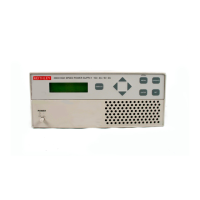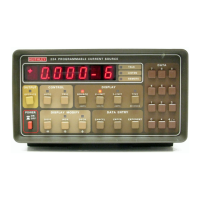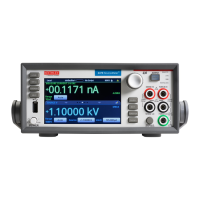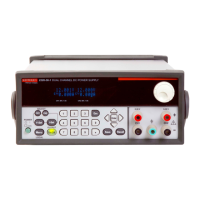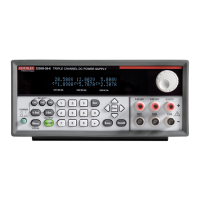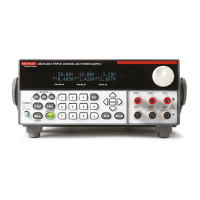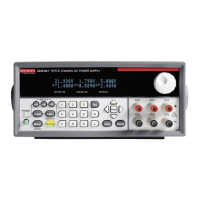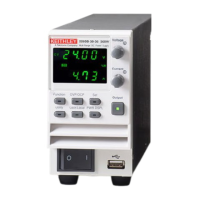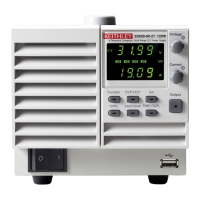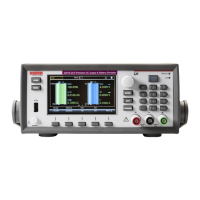Long Integration Measurements 4-15
Command notes (long integration measurements)
SENSe[1]:FUNCtion ‘LINTegration’ Applies to battery channel (#1)
SENSe2:FUNCtion ‘LINTegration’ Applies to charger channel (#2)
The parameter name can be enclosed in single or double quotes (single — shown above,
double — sho
wn in Table 4-2).
SENSe[1]:LINTegration:SEARch <b> Applies to battery channel (#1)
SENSe2:LINTegration:SEARch <b> Applies to charger channel (#2)
Refer to “Using FAST, SEARch, and DETect” for detailed usage information.
SENSe[1]:LINTegration:FAST <b> Applies to battery channel (#1)
SENSe2:LINTegration:FAST <b> Applies to charger channel (#2)
Refer to “Using FAST, SEARch, and DETect” for detailed usage information.
SENSe[1]:LINTegration:DETect <b> Applies to battery channel (#1)
SENSe2:LINTegration:DETect <b> Applies to charger channel (#2)
Refer to “Using FAST, SEARch, and DETect” for detailed usage information.
READ[1]? Applies to battery channel (#1)
READ2? Applies to charger channel (#2)
After sending a trigger reading command to perform long integration measurements, do
not address the
power supply to talk until all readings are completed. Details on READ?
and the other signal oriented measurement commands are provided in Section 10.
Using FAST, SEARch, and DETect
Use FAST, SEARch, and DETect to control how background readings are taken. A
background reading is a measurement taken by the power supply between user triggered
readings. The selected function dictates how background readings are taken between user
triggered readings.
For long integration, a background reading involves looking for the pulse and optionally gen-
erating a reading for the user. The various settings of SEARc
h, FAST and DETect allow the user
to fine tune the function. This enables the function to perform the desired background readings
(if any) between user triggered readings. The default settings (FAST:OFF, SEARch:ON, and
DETect:OFF) allow the long integration background readings to be taken. If no pulse is present,
the setting of TimeOUT affects how responsive the supply is to bus commands. If a pulse is
present, the search time plus reading time (TIME setting) affects how responsive the supply is
to bus commands (refer to Figure 4-3). Table 4-3 on page 4-16 contains the available settings for
FAST, SEARch, and DETect commands and a description of
the resulting action. For more
information on search time, reading time, and TimeOUT, see “Pulse timeout” on page 4-4.
Test Equipment Depot - 800.517.8431 - 99 Washington Street Melrose, MA 02176
TestEquipmentDepot.com
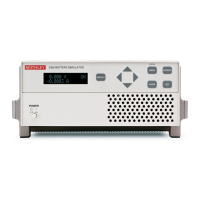
